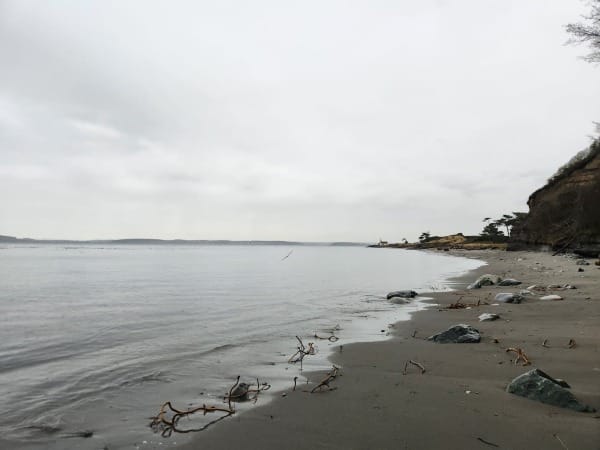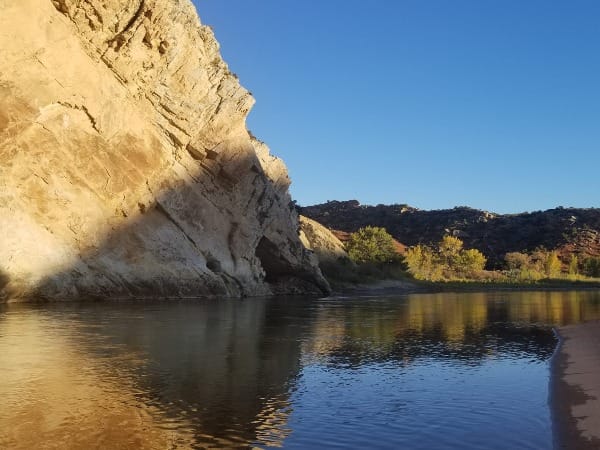Dissenting Views of Fire and the Wild
Elers Koch's "The Passing of the Lolo Trail" (1935)

This week, Taking Bearings goes to The Library. It's been a couple cycles since I've explored a book. Time has felt scarce, so I've tried alternatives. This week, I do the same, revisiting my favorite Journal of Forestry article. (Yes, it is possible to have a favorite J. Forestry article! You don't have one?)
The article comes from February 1935, and that depression-era date is important context. "The Passing of the Lolo Trail" by Elers Koch opens a window to the past and someone who was thinking in unusual ways. As such, he helps remind us that thinking against the grain always happens. Read on!
Taking Bearings is supported by readers. To support my research and encourage my writing, please subscribe and consider becoming a paid subscriber.
Elers Koch, Forester
To learn about Elers Koch (1880-1954) is to learn about the US Forest Service and Montana and Idaho. He recounts his life and career in Forty Years a Forester.1 Its opening line says it all, "I think I was born to be a forester."
“I think I was born to be a forester.”
During the years of Koch's career, forestry and the Forest Service were new and idealistic. Koch was too. Working in the northern Rockies gave him the opportunity to build the agency through working on the ground, effectively inventing the job as it was done. Forty Years a Forester captures this better than any history book. Traipsing through the backcountry, getting to know the characters who lived there and the characteristics of the land, made Koch deeply knowledgeable about some of the most rugged places in the continental United States.

Another "benefit" of working in the northern Rockies was exposure to abundant wildfire. He was involved in four big fire years: 1910, 1919, 1929, and 1934. As my mentor Steve Pyne has argued, the northern Rockies fire imprinted the Forest Service significantly because so many agency chiefs experienced them there.2 For them, mainly, the experience meant they wanted to extinguish future fires as fast as possible.
By 1935, Elers Koch had other ideas.
"The Passing of the Lolo Trail"
The editors of the Journal of Forestry took some persuading to print Koch's article. And they only did so with a disclaimer:
A somewhat partisan discussion of an important and controversial question of land use, "What shall be done with the low-value backcountry." The author, who is evidently a wilderness area enthusiast, maintains that the Forest Service has already made a serious mistake in opening the Selway wilderness with roads, and goes so far as to question the worth-whileness of attempting fire control in that country.
The article is short—six pages, one-third of them photos—but Koch packs a punch and comes out swinging: "The Lolo Trail is no more." Simple, direct, unequivocal.
The Lolo Trail cuts through the Montana-Idaho borderland and mainly follows rivers. The Nez Perce and others used it long before Lewis and Clark found it and before the US Forest Service ended it (in Koch's view). In the name of fire control, the Forest Service bulldozed roads and built trails, erasing the historic paths of Indigenous peoples, Lewis and Clark, fur traders, soldiers, and forest rangers.

Until just a few years before, all this country, said Koch, appeared as it had since time immemorial. Now, cars and trucks "swarm" it. "Roads are such final and irretrievable facts," Koch proclaimed. He questioned whether all the roads and telephone wires and fire lookouts did any good. Maybe it "was all a ghastly mistake, like plowing up the good buffalo grass sod of the dry prairies," he mused.
All of this appeared on the opening page. It's elegaic.
Then, it becomes provocative.
Koch identified the commercial value of the land in this country. In short, he concludes, the timber is not worth much across millions of acres. Instead, the land's chief value was recreation: "isolation, scenery, fish and game." But the Forest Service, and forestry professionals generally, viewed forests through a narrow prism of protecting board feet. And Task No. 1 for that was putting out fire.
Here, Koch told some hard truths.
"Man's efforts have been puny in the face of Nature's forests."
Having seen those big fire years, Koch spoke with some personal authority. Those efforts hadn't done much good. "Man's efforts have been puny in the face of Nature's forests," Koch concluded. Despite millions of dollars spent, "no appreciable difference" had been made. It was a "practical impossibility" to control fire. And just like the nation was then abandoning submarginal agricultural land after waking up to the catastrophic dust bowl, it was time to stop this futile effort, "time to withdraw from a losing game."
To be clear, Koch was not advocating abandoning all fire control in all forests. But in places with little merchantable timber and that was inaccessible, it made no sense to continue.

The Importance of Koch’s Article
As the Journal's disclaimer suggested, Koch held a minority view. But not a singular one. Almost exactly as this appeared, a small group of foresters organized The Wilderness Society to advocate for keeping some areas roadless. Tired of automobiles everywhere, people like Koch and TWS co-founders Bob Marshall and Aldo Leopold, had grown weary of the Forest Service building roads everywhere, especially in the name of futile fire control. Changing ideas were emerging.
Dissenting voices are important to note. They are not always right, of course. But they are always present. When we dig around in the past, we sometimes cross prescient writers who saw some things clearly when those around them looked through murky lenses.
Final Words
Koch featured in this article of mine from 2018, which contextualizes the gradual opening of alternative views of wildlife.
Later this week a bonus newsletter will appear for paid subscribers, with a preview available for all subscribers. Keep your eyes open, and if you want access, upgrade your subscription.
As always, you can find my books, and books where some of my work is included, at my Bookshop affiliate page (where, if you order, I get a small benefit).
Taking Bearings Next Week
Next week is The Wild Card. You never know what’s coming. Stay tuned!
I recommend Elers Koch, Forty Years a Forester, annotated edition, ed. Char Miller (Lincoln: University of Nebraska Press, 2019). When I say I recommend it, that’s literal; I provided an endorsement on the back cover! “The Passing of the Lolo Trail” is the final chapter in the book. ↩
Pyne makes this point several places, but the easiest place to see his thinking about this region is Stephen J. Pyne, The Northern Rockies: A Fire Survey (Tucson: University of Arizona Press, 2016). ↩



Comments ()